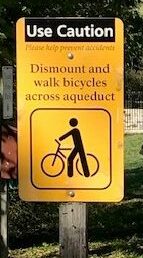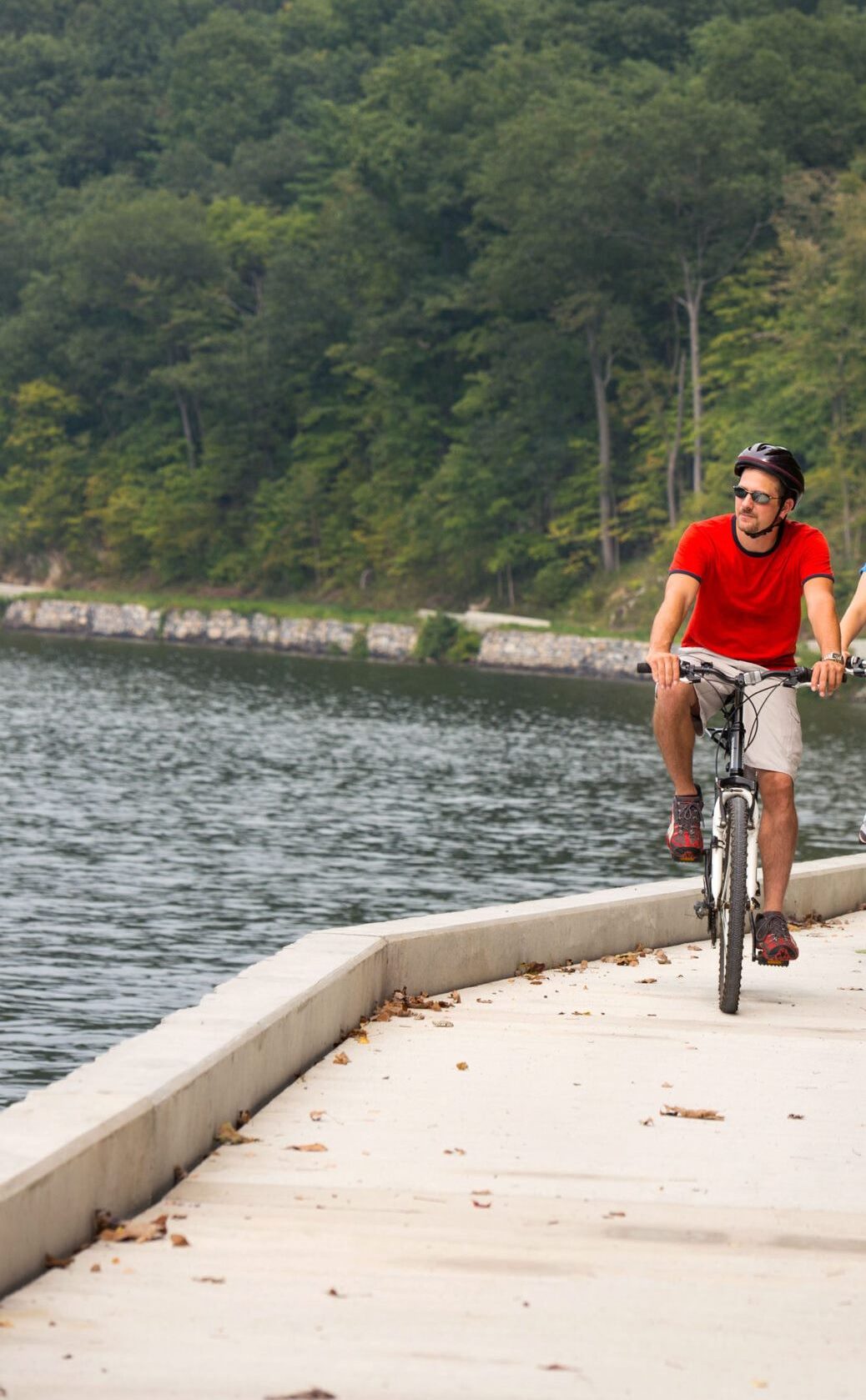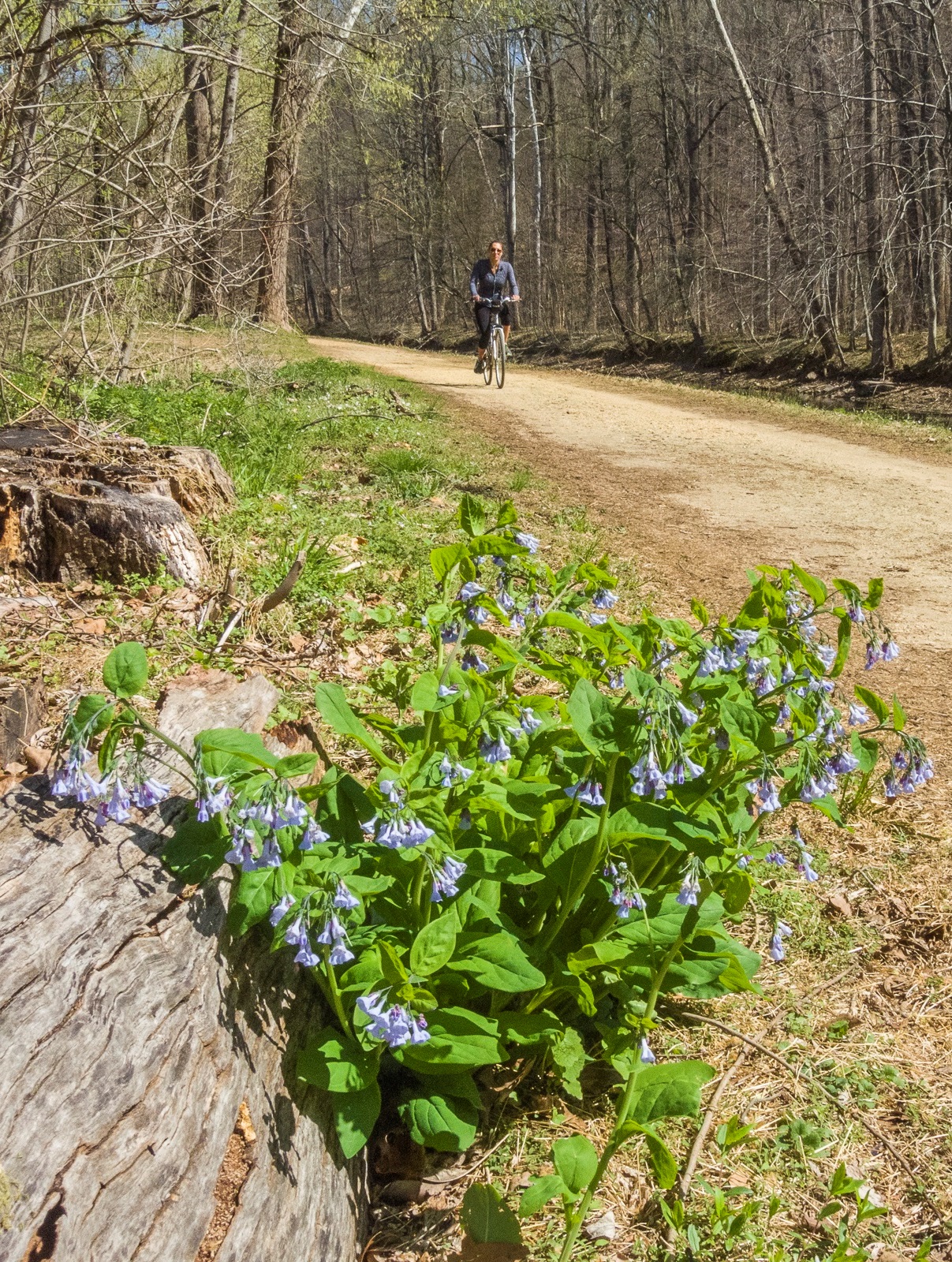Towpath Safety
Recently the Association has learned of several near-collisions between bikers and hikers using the towpath. In order for everyone to enjoy the towpath safely, it is important that all towpath users be aware of and follow the Chesapeake & Ohio Canal National Historical Park’s hiking and biking regulations and guidelines.

Please follow these basic biking regulations:
- 15 MPH maximum speed limit on towpath
- Ride single file
- Stay to the right except when passing
- Yield right of way to all pedestrians, horses and mules
- Walk bikes over aqueducts
- Sound devices (bell, horn, etc.) are recommended and should be sounded within 100′ of approaching others
Helmets required in accordance with county ordinances. Children under the age of 18 are required to wear helmets in Montgomery County, MD, and children under the age of 16 are required to wear helmets in other areas of the park.
Paw Paw Tunnel: For your safety and others, please walk your bike through the Tunnel and carry a light source.
Hiking Tips:
- Bring water and food
- Wear sturdy footwear
- Be prepared for changing weather conditions
- Know your location
- Share the towpath with other users
- Pack out all trash. Trash bags are provided at dispensers located throughout the park.
For additional information see:
Towpath Etiquette and Recommendations:
All Towpath Users:
When going to the C&O Canal NHP, make sure others know where you are. Cellular phone reception is spotty, and sometimes not available, in parts of the park.
Share the towpath and be courteous to other users.
Bikers:
- When approaching pedestrians, slow down. The towpath is narrow and walkers may not know you are approaching until the last second.
- When encountering a congested areas or a large group of pedestrians, for the safety of all parties, it may be necessary for bikers to dismount and walk their bicycles through the area.
- Although Park rules only recommend that bikers use sound devices to warn others that they are approaching and passing, such a device is strongly encouraged.
- Many modern electronic bells are louder, and can be sounded and heard from further way, and may be better for warning others that you are approaching. These sound devices often include a variety of tones and are relatively inexpensive.
Hikers:
- Be Alert! Although Park regulations “recommend” that bikers use a sound device to warn pedestrians that they are approaching, it is not required. Bicycles can approach relatively quickly and quietly.
- When traveling on the towpath, stay to the right with no more than two people side-by-side.
- Before crossing the towpath, look both ways to make sure no one else to approaching.
- If you are leading a group tour that may stop and encompass the entire towpath, it may be helpful to place orange traffic cones on either side of the group to provide advance warning to bikers to slow down as they approach the area.



